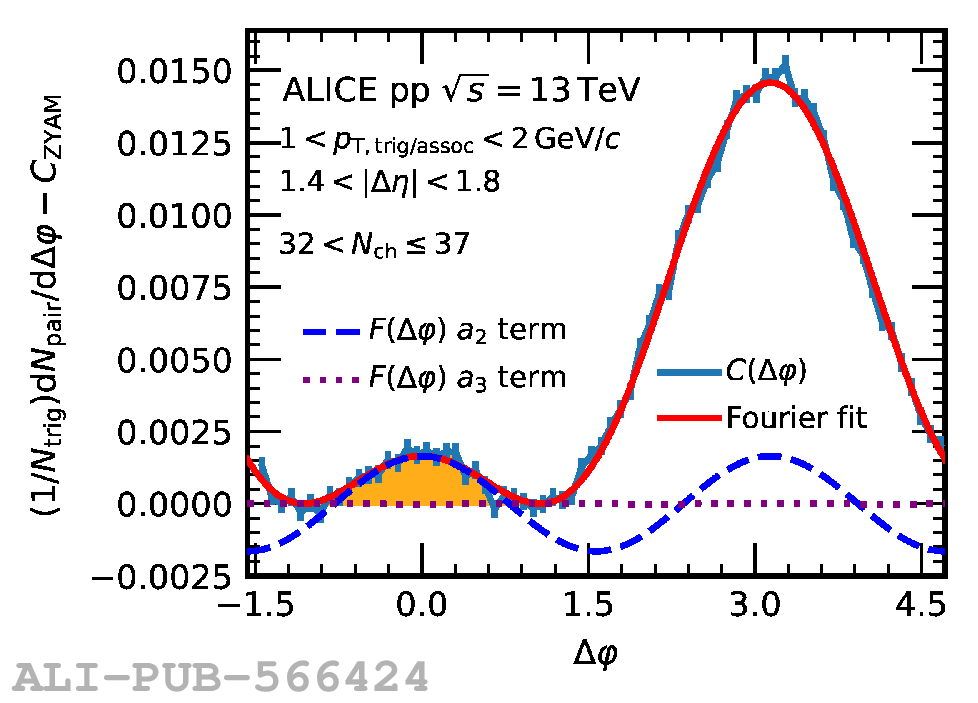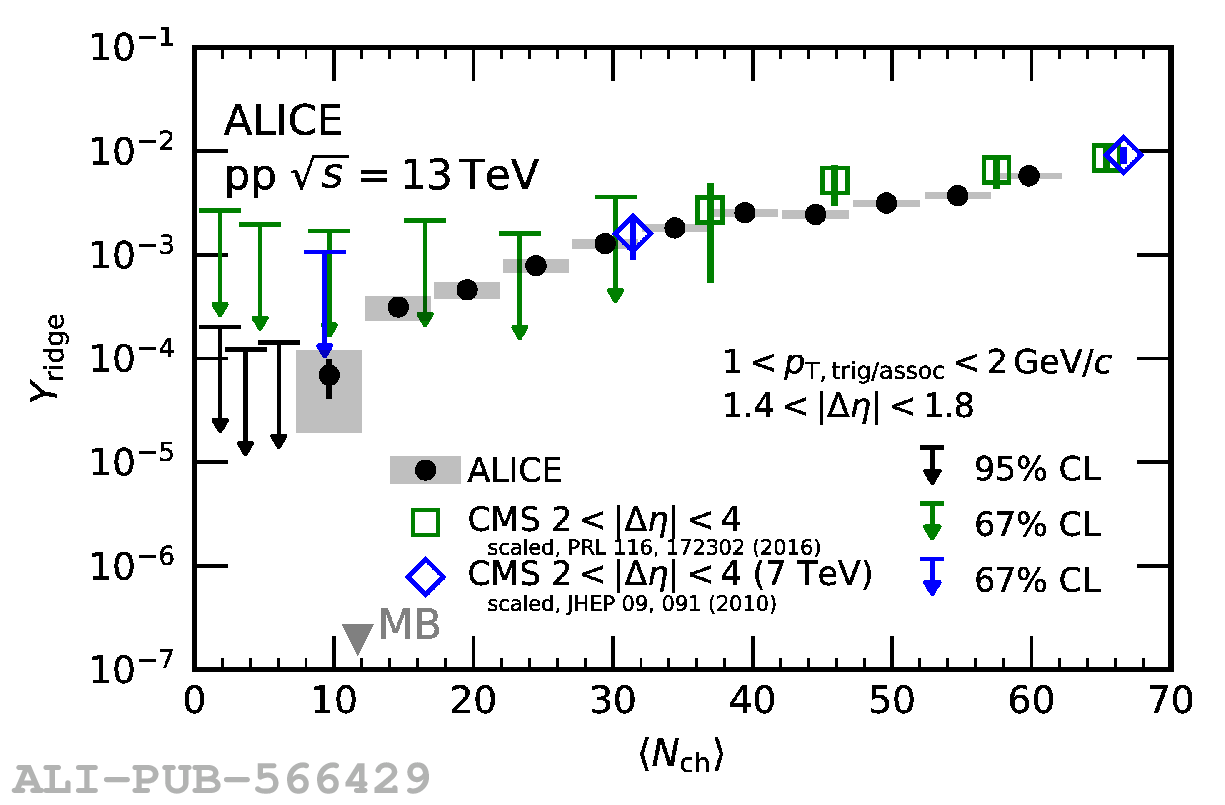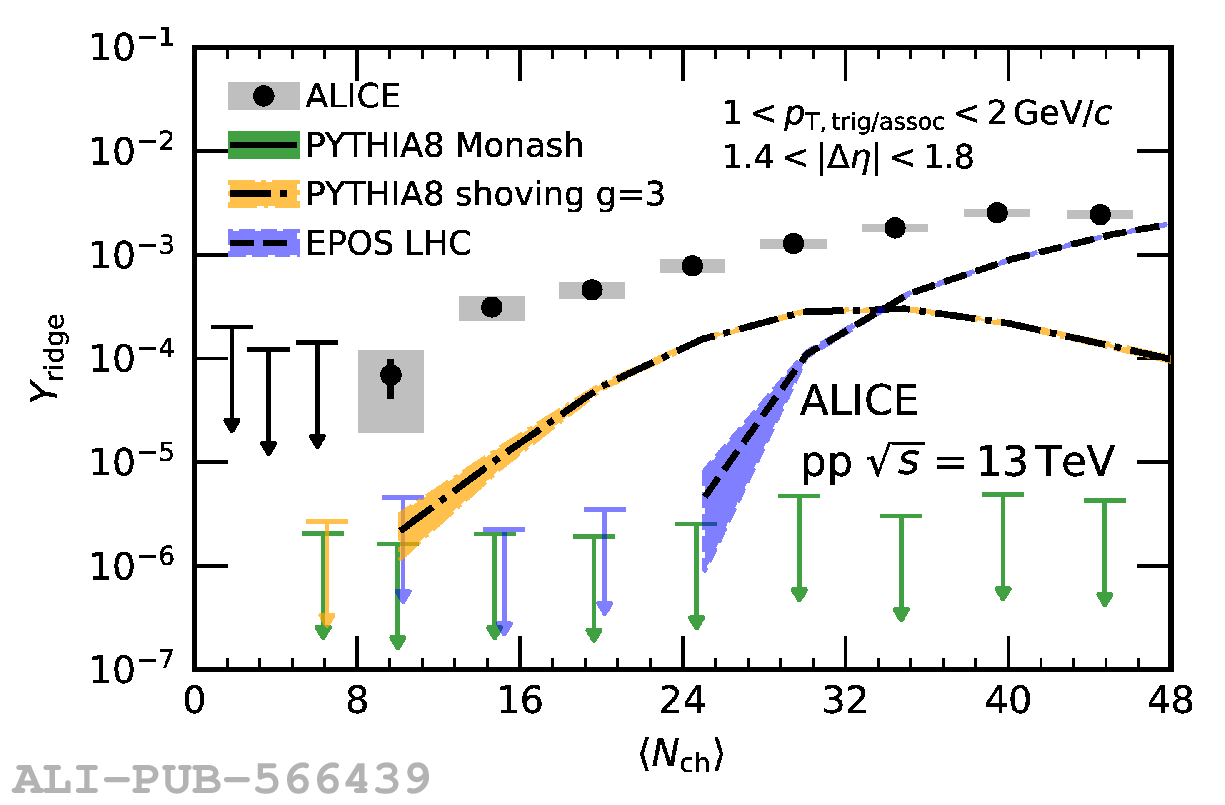This Letter presents the measurement of near-side associated per-trigger yields, denoted ridge yields, from the analysis of angular correlations of charged hadrons in proton-proton collisions at $\sqrt{s}$ = 13 TeV. Long-range ridge yields are extracted for pairs of charged particles with a pseudorapidity difference of $1.4 <~ |\Delta\eta| <~ 1.8$ and a transverse momentum of $1 <~ p_{\rm T} <~ 2$ GeV/$c$, as a function of the charged-particle multiplicity measured at midrapidity. This study extends the measurements of the ridge yield to the low multiplicity region, where in hadronic collisions it is typically conjectured that a strongly-interacting medium is unlikely to be formed. The precision of the new low multiplicity results allows for the first direct quantitative comparison with the results obtained in $\mathrm {e^{+}e^{-}}$ collisions at $\sqrt{s}$ = 91 GeV and $\sqrt{s}$ = 183$-$209 GeV, where initial-state effects such as pre-equilibrium dynamics and collision geometry are not expected to play a role. In the multiplicity range $8\lesssim\langle N_\mathrm{ch}\rangle\lesssim 24$ where the $\mathrm {e^{+}e^{-}}$ results have good precision, the measured ridge yields in pp collisions are substantially larger than the limits set in $\mathrm {e^{+}e^{-}}$ annihilations. Consequently, the findings presented in this Letter suggest that the processes involved in $\mathrm {e^{+}e^{-}}$ annihilations do not contribute significantly to the emergence of long-range correlations in pp collisions.
Phys. Rev. Lett. 132 (2024) 172302
HEP Data
e-Print: arXiv:2311.14357 | PDF | inSPIRE
CERN-EP-2023-265
Figure group





